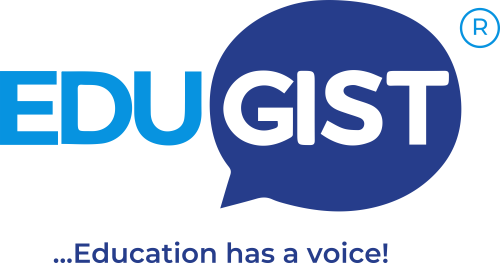In today’s digital age, screens are an inescapable part of life, especially for children and adolescents. From smartphones to tablets, laptops to gaming consoles, technology has become a constant companion for the younger generation.
However, this pervasive presence has sparked a heated debate: Is screen time a bane or a boon for learning and development?
Recent data from the American Academy of Child and Adolescent Psychiatry reveals that children aged 8 to 12 spend an average of four to six hours daily on screens, while teenagers log up to nine hours. Jonathan Haidt’s groundbreaking book, The Anxious Generation, has further intensified concerns, linking excessive screen time and social media use to a mental health crisis among youth. Yet, while the risks are undeniable, technology also offers unprecedented opportunities for learning, creativity, and connection.
This article explores the dual nature of screen time, offering insights into how we can strike a balance between its benefits and drawbacks. By examining current research, real-world examples, and innovative approaches, we aim to provide a roadmap for parents, educators, and policymakers to harness the power of technology for positive outcomes.
1.0 The Two Faces of Screen Time: Risks and Rewards
1.1 The Dark Side of Digital Overload
Excessive and unregulated screen time has been linked to a host of negative outcomes, particularly for young minds. Studies, including Haidt’s research, highlight alarming trends: increased anxiety, depression, and social isolation among adolescents who spend significant time on social media or consuming unfiltered content. The constant barrage of notifications, comparisons, and curated online personas can erode self-esteem and hinder healthy social development.
For parents, these findings are a wake-up call. The challenge lies not in eliminating screen time altogether but in minimizing its harmful effects while maximizing its potential for good.
1.2 The Bright Side: Technology as a Tool for Learning
Not all screen time is created equal. When used intentionally, technology can be a powerful ally in education and personal growth. Educational technology (edtech) tools, such as gamified learning platforms, have proven particularly effective in engaging students and enhancing learning outcomes. Apps like Duolingo and Headspace demonstrate how elements like storytelling, challenges, and rewards can motivate users to achieve their goals.
A meta-analysis of 41 studies found that gamification, when designed thoughtfully, significantly boosts learning outcomes. By combining mechanics (points, rankings), dynamics (feedback, competition), and aesthetics (storytelling, emotional engagement), these tools create immersive and personalized learning experiences.
2.0 The Role of Edtech in Modern Education
2.1 Personalized Learning: Tailoring Education to Individual Needs
One of the most significant advantages of technology in education is its ability to personalize learning. Traditional classrooms often adopt a one-size-fits-all approach, leaving some students bored and others struggling to keep up. Edtech tools, however, adapt to each child’s unique needs, offering tailored lessons that fill knowledge gaps or challenge advanced learners.
For example, platforms like Khan Academy and Quizlet use AI to analyse student performance and provide customized recommendations. This approach not only improves academic outcomes but also fosters a love for learning by celebrating progress and achievements.
2.2 Gamification: Making Learning Fun and Engaging
Gamification has emerged as a game-changer in education. A three-year longitudinal study found that gamified learning improves students’ academic performance, motivation, and retention. By turning lessons into interactive games, educators can capture students’ attention and make complex concepts more accessible.
Imagine mastering U.S. history by crafting Taylor Swift-inspired songs or learning math through a space exploration game. These innovative approaches not only make learning enjoyable but also equip students with critical thinking and problem-solving skills.
3.0 Real-World Applications: Turning Screen Time into Skill-Building
3.1 Case Study: A Tech-Driven School System
One inspiring example comes from a tech-driven school system that has redefined the role of screen time in education. Students spend dedicated hours engaging with digital platforms, not just for entertainment but to develop essential life skills. Through hands-on workshops and interactive apps, they strengthen abilities like teamwork, communication, and problem-solving.
For instance, a student passionate about comic books uses digital tools to learn storytelling, public speaking, and design, working toward creating a digital comic-inspired project. Another explores sales, advertising, and marketing, laying the groundwork for a future entrepreneurial venture. These students are not passive consumers of content but active creators, turning their passions into purpose.
3.2 The Cognitive Benefits of Thoughtful Gaming
Contrary to popular belief, gaming can have positive effects on cognitive abilities when used thoughtfully. A 2022 study found that gaming improves children’s working memory, visual processing skills, and problem-solving abilities. Games that require strategic thinking, collaboration, and creativity can serve as valuable learning tools, preparing students for the challenges of the modern world.
4.0 Preparing for the Future: The Role of AI and Automation
4.1 The Rise of Generative AI in Education
As artificial intelligence continues to evolve, its impact on education is becoming increasingly profound. Generative AI tools, such as ChatGPT, are already being used to enhance learning experiences, from personalized tutoring to creative writing exercises. According to the National Bureau of Economic Research, the adoption of generative AI in the U.S. has outpaced that of personal computers and the internet, with 39% of adults aged 18 to 64 using it as of August 2024.
In the classroom, AI can assist teachers by automating administrative tasks, providing real-time feedback, and creating customized lesson plans. For students, it offers new ways to explore complex topics and develop critical skills like coding, data analysis, and digital literacy.
4.2 Equipping Students for a Tech-Driven Job Market
The job market is undergoing a seismic shift, driven by AI and automation. To thrive in this new landscape, students must be adept at navigating and leveraging technology. By integrating productive screen time into education, we can prepare the next generation for careers that require creativity, adaptability, and technical expertise.
5.0 Recommendations for Parents and Educators
-
- Set Clear Boundaries: Establish guidelines for screen time, ensuring a balance between educational and recreational use.
- Choose Quality Over Quantity: Prioritize apps and platforms that promote learning, creativity, and skill development.
- Encourage Active Creation: Foster a culture of creation over consumption by encouraging students to use technology for projects and problem-solving.
- Stay Informed: Keep up with the latest research and trends in edtech to make informed decisions about screen time.
- Model Healthy Habits: Demonstrate responsible technology use by setting an example for children to follow.
Conclusion
The digital age presents both challenges and opportunities for learning and development. While excessive screen time can have detrimental effects, technology also holds immense potential to transform education and empower the next generation. By embracing the good and curtailing the bad, we can harness the power of screen time to spark curiosity, encourage creativity, and prepare students for a future defined by innovation and change.
As parents, educators, and policymakers, our task is not to resist technology but to guide its use in ways that enrich lives and unlock potential. The future of learning is here, and it is digital—let’s make it count. Are going to join us?















